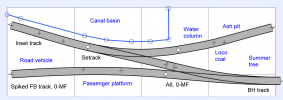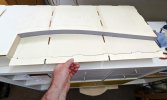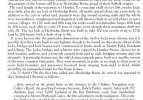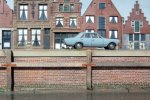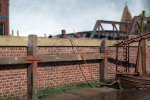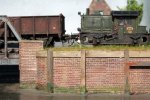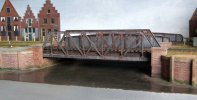Richard Gawler
Western Thunderer
The idea of ‘Heybridge Basin’ is to build a working diorama to replace my test track and get some first experience of layout-building in 7mm scale. Progress is likely to be sporadic so it seems best to start a separate topic for it, even though the layout is tiny.
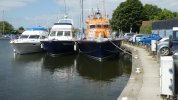
This is the present-day Heybridge Basin. There is a sea lock here, this connects the Chelmer and Blackwater Navigation to the Blackwater Estuary. The decomissioned lifeboat would be worth looking round one day.
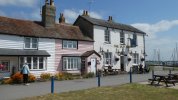
All very pleasant. These cottages and the pub appear in a photograph around 1890. Some of the cottages were shops then.
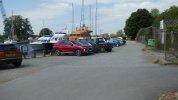
Obviously, there should have been a railway here. The terminus of a railway built from Langford and through Heybridge itself to reach the basin here.
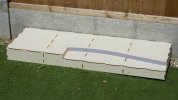
I finished the baseboard today. This is from a kit by Grainge and Hodder, 1200 x 400 mm.
The edge of the basin (the blue face) is 1.5 mm card, this is roughly the thickness of the saw blade so it sits vertical.
A basin for a working waterway was typically dug eight feet deep and dredged to six feet. I have made the vertical space rather shorter to keep the strength of the front frame, but if I try a piece of Perspex for the surface of the water, with this set about two feet below the quayside, perhaps it will look ok.
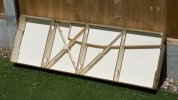
This structure is almost entirely 6 mm ply from the kit. I used three of the braces not four because I want to leave plenty of room for a point mechanism. To be honest, I am not at all sure if I really need three. The structure tightened up overnight as the glue set.
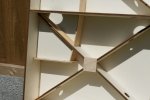
There is some bendy ply reinforcing the edge of the basin, and some offcuts of ordinary rigid ply adding occasional reinforcement.
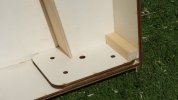
I have resorted to stripwood in two places. There are two pieces connecting a diagonal brace to the underneath of the basin (where my cutting out was a bit too sloppy), and a corner block for the short outside corner.
The subject is a bit ambitious for five and bit square feet in 0 gauge but if I can capture a little of the character of my might-have-been railway I will be happy. Hopefully I can include 0-F and 0-MF track, some BH and FB rail, some inset track, a passenger platform and a small canal boat.

This is the present-day Heybridge Basin. There is a sea lock here, this connects the Chelmer and Blackwater Navigation to the Blackwater Estuary. The decomissioned lifeboat would be worth looking round one day.

All very pleasant. These cottages and the pub appear in a photograph around 1890. Some of the cottages were shops then.

Obviously, there should have been a railway here. The terminus of a railway built from Langford and through Heybridge itself to reach the basin here.

I finished the baseboard today. This is from a kit by Grainge and Hodder, 1200 x 400 mm.
The edge of the basin (the blue face) is 1.5 mm card, this is roughly the thickness of the saw blade so it sits vertical.
A basin for a working waterway was typically dug eight feet deep and dredged to six feet. I have made the vertical space rather shorter to keep the strength of the front frame, but if I try a piece of Perspex for the surface of the water, with this set about two feet below the quayside, perhaps it will look ok.

This structure is almost entirely 6 mm ply from the kit. I used three of the braces not four because I want to leave plenty of room for a point mechanism. To be honest, I am not at all sure if I really need three. The structure tightened up overnight as the glue set.

There is some bendy ply reinforcing the edge of the basin, and some offcuts of ordinary rigid ply adding occasional reinforcement.

I have resorted to stripwood in two places. There are two pieces connecting a diagonal brace to the underneath of the basin (where my cutting out was a bit too sloppy), and a corner block for the short outside corner.
The subject is a bit ambitious for five and bit square feet in 0 gauge but if I can capture a little of the character of my might-have-been railway I will be happy. Hopefully I can include 0-F and 0-MF track, some BH and FB rail, some inset track, a passenger platform and a small canal boat.
Last edited:



